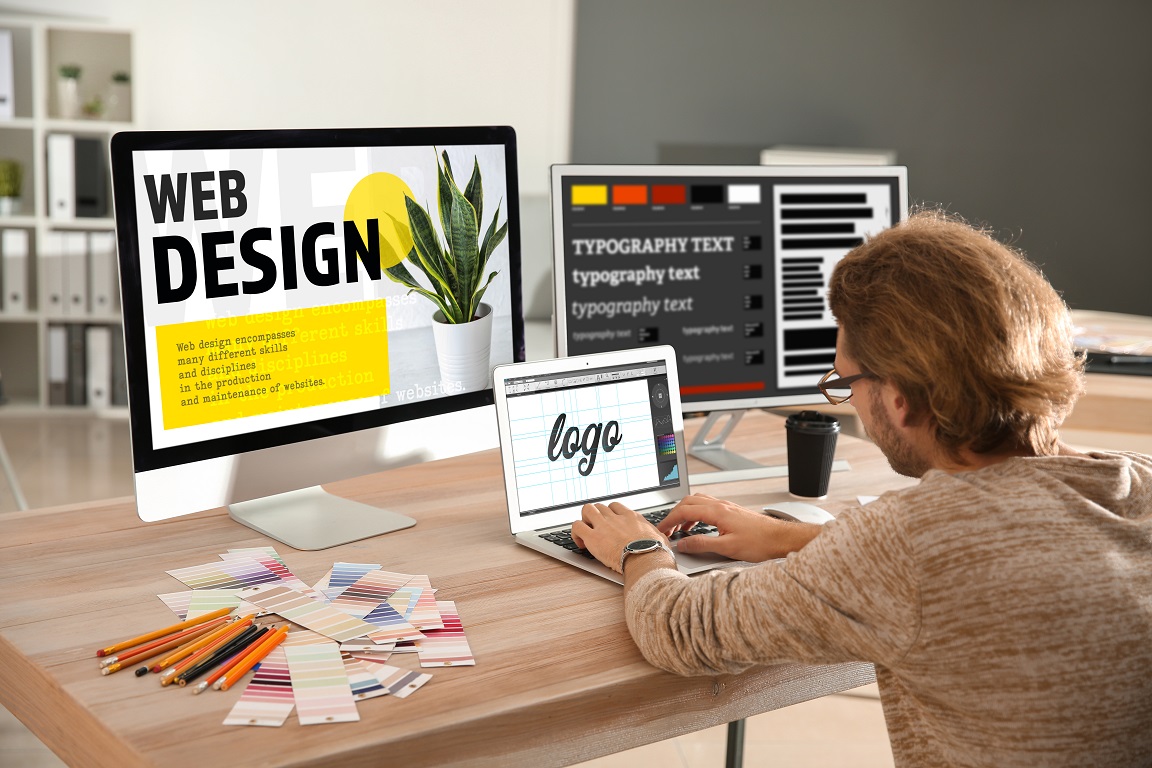
Crucial Element of Web Style That Impact Your Web site's Performance
In today's electronic age, the efficiency of a site hinges on numerous crucial style aspects that can either elevate or weaken its success. From the speed at which a page tons to its flexibility across different gadgets, each part plays a crucial function in shaping individual experience. Exactly how do these components adjoin to enhance a website's total efficiency?
Packing Speed Optimization
In the hectic electronic landscape, enhancing packing speed is vital for boosting user experience and keeping efficient website performance. The importance of filling speed can not be overemphasized, as even a one-second delay can substantially reduce user complete satisfaction and increase bounce rates. Efficient optimization of filling rate entails a diverse approach, integrating both technological and material approaches.

An additional essential method is optimizing photos by compressing them without compromising quality. Web Design Gauteng. This can be accomplished through devices and plugins that instantly adjust photo size and resolution. Carrying out material shipment networks (CDNs) can also disperse content across different web servers internationally, making sure faster gain access to based upon customer distance
Last but not least, lowering web server reaction time and allowing compression with tools like Gzip can further enhance loading rate. By prioritizing these components, web sites can guarantee swift, seamless interactions, ultimately enhancing individual engagement and retention.
Mobile Responsiveness
Recognizing the ubiquitous presence of mobile devices, ensuring mobile responsiveness is necessary for modern internet style. With a raising number of users accessing sites using smart devices and tablet computers, a responsive style warranties that an internet site adapts seamlessly to numerous screen dimensions and orientations. This adaptability boosts individual experience, cultivating longer involvement and possibly greater conversion prices. A site that fails to render correctly on mobile phones dangers alienating a significant portion of its target market, leading to increased bounce rates and reduced customer fulfillment.
Mobile responsiveness is not merely a trend; it is an essential component that online search engine, such as Google, consider when ranking web sites. A responsive layout is indispensable to look engine optimization (SEO), as it enhances site access and use, variables that add to far better online search engine exposure. Receptive style streamlines maintenance efforts by getting rid of the need for different desktop computer and mobile versions, guaranteeing consistency across all systems.
Including flexible grids, liquid photos, and CSS media inquiries are fundamental techniques in creating a mobile-responsive style. These aspects make sure that web content is shown optimally, no matter of the device. Eventually, prioritizing mobile responsiveness is a critical decision that substantially influences a website's performance and total success.
User-Friendly Navigating
Efficient navigating style is a pivotal part of user-friendly sites. It ensures users can easily discover preferred info, dramatically boosting their total experience. A well-structured navigation system directly influences individual retention and involvement, as visitors are much more likely to stay longer if they can easily access what they need. Clear, user-friendly navigation reduces cognitive tons, enabling customers to focus More hints on material instead than how to find it.
Overcomplicated menus with extreme options can overwhelm individuals, leading to disappointment and possible abandonment. Organizing content hierarchically and making use of sensible categorization can even more help in intuitive navigation.
Including constant navigating elements throughout all pages is an additional important method. This consistency cultivates familiarity, making it possible for individuals to forecast where they can find certain details, therefore improving their comfort and convenience of usage. Furthermore, integrating search functionality gives an option for users that favor direct access to details.
Visual Design and Visual Appeal
While straightforward navigating ensures smooth access to info, the influence of visual design and aesthetics on site performance can not be underrated. The aesthetic charm of a web site functions as the impression for visitors, establishing the tone for their entire customer experience. A well-designed site must balance appearances with capability, making sure that aesthetic components boost instead of take away from user interaction.
Color design, typography, and images are essential parts of aesthetic style. These components ought to follow the brand name's identity, fostering recognition and trust. A harmonious shade palette can stimulate specific emotions, while legible and clear typography enhances content accessibility. Images must be top notch and pertinent, supporting the site's messaging without overwhelming the individual.
Minimalist layout principles typically result in improved web site efficiency. By decreasing mess and concentrating on vital components, customers can browse much more without effort and locate information effectively. Structured style adds to much faster loading times, an important element in preserving visitor passion.
Ultimately, a visually pleasing internet site is more probable to involve site visitors, motivating longer site check outs find out and boosted interactions. By focusing on thoughtful visual design, businesses can produce an inviting digital visibility that matches their overall goals.
SEO-Friendly Structure
Crafting an SEO-friendly structure is essential to improving a website's visibility in online search engine results. An orderly site style not only facilitates ease of navigation for customers yet likewise aids online search engine crawlers in successfully indexing web content. This starts with a rational URL structure, using keyword-rich and detailed Links that give clear paths to material. Additionally, utilizing an ordered framework with a distinct hierarchy of pages ensures that essential web pages receive the focus they are worthy of.
Navigation is an additional critical facet of an SEO-friendly framework. A clear, consistent menu aids customers find details rapidly while indicating to online search engine the importance and significance of each page. Applying breadcrumb navigating even more aids both individuals and search engines in understanding the website's design and context.
Ensuring that all elements of the website are optimized for mobile individuals is important, as search engines prefer mobile-friendly designs. By concentrating useful reference on these essential components, internet sites can accomplish improved search positions and customer satisfaction.

Conclusion
Enhancing crucial elements of website design is critical for enhancing internet site efficiency. Prioritizing loading speed, mobile responsiveness, and easy to use navigating substantially enhances individual fulfillment and interaction, lowering bounce rates and retaining visitors. Integrating aesthetic layout with an SEO-friendly framework additionally intensifies these effects, ensuring the attraction and retention of site visitors while encouraging conversions. Jointly, these approaches produce a cohesive and effective on the internet presence, straightening with contemporary digital standards and progressing general website success.
In the fast-paced digital landscape, optimizing filling speed is critical for boosting individual experience and maintaining effective internet site performance. With a raising number of individuals accessing internet sites using mobile phones and tablet computers, a responsive design guarantees that an internet site adapts seamlessly to different display dimensions and alignments. An internet site that falls short to provide effectively on mobile gadgets risks estranging a considerable portion of its target market, leading to enhanced bounce rates and diminished individual complete satisfaction.
Ensuring that all components of the site are maximized for mobile customers is essential, as search engines prefer mobile-friendly designs. By concentrating on these key elements, websites can achieve improved search positions and individual satisfaction.